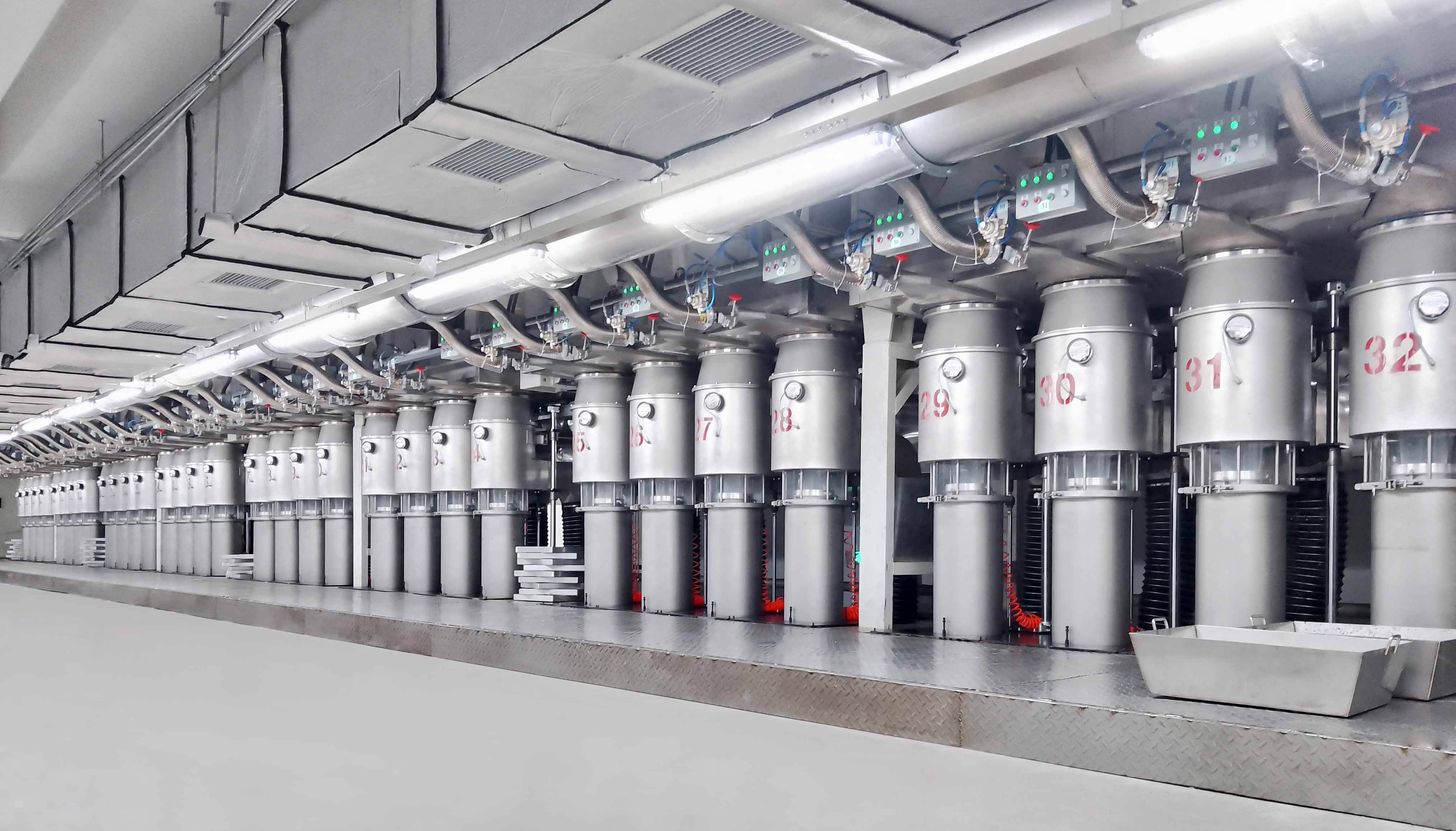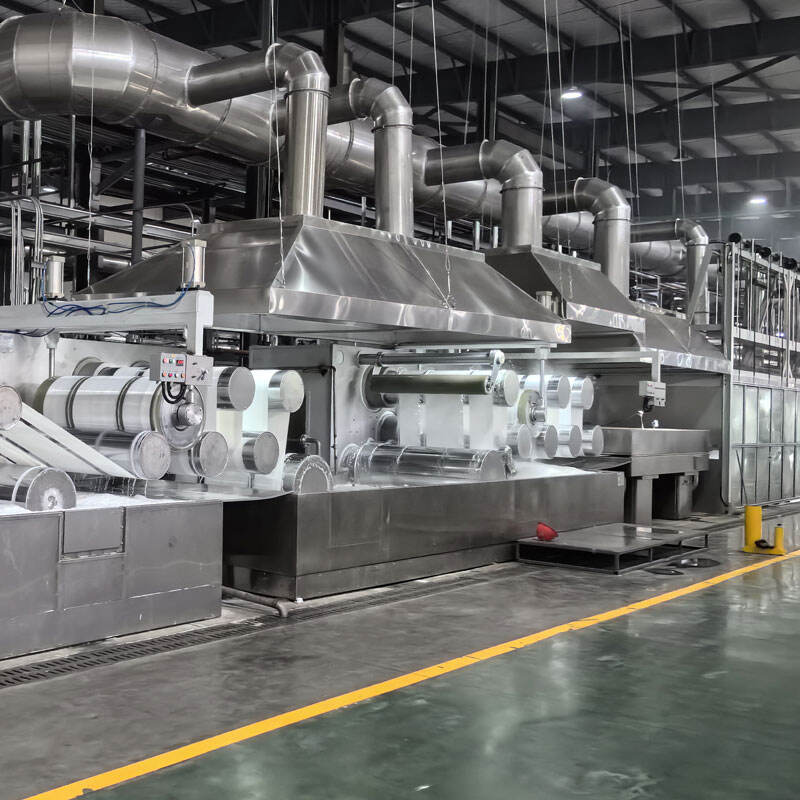When searching for quality flexo presses, there are a few important parameters that must be considered, as they impact the equipment’s overall performance stability when printing. Firstly, the precision of the printing drum is essential. Quality flexo presses have printing drums made with the latest CNC technology, which perfectly eliminates runout and equalizes wall thickness. This precision helps to prevent the uneven and inaccurate transfer of ink during the printing process, which results in the blurry patterns or color variations. Secondly, the stability of the ink supply system is another important indicator. The best flexo presses are equipped with an ink supply system that can consist of stable ink viscosity and flow rate, which prevents the accumulation of excessive ink or ink deficiency that disrupts the printing supply continuity. In addition, the material used for the frame should also be considered. Quality flexo presses are manufactured using high-strength materials such as cast iron and steel, which provide supportive structure and help endure and reduce operational vibration. For the improvement of printing accuracy, the frame must be able to support stable operational performance. Buyers must understand the factors in order to tell the difference between quality flexo presses and standard ones, which is essential for the stable printing results they are looking for.
Another important part of flexo presses is the drying system, whose performance determines the equipment’s ability to maintain printing quality stability, particularly depending on the material used for printing.

High-quality flexo presses are designed with multi-stage drying systems which are capable of adjusting temperature and air volume based on the materials being processed (ex. plastic films, paper, and non-woven fabrics). If the flexo press is outstanding, the drying systems can print on heat-sensitive materials by using low-temperature hot air and rapid air circulation simultaneously to dry the ink quickly without damaging the materials. Inferior flexo presses, however, have single-stage drying systems with fixed temperature settings. This condition causes ink to smudge when drying is insufficient and materials to deform when drying is excessive. Also, high-quality flexo presses have uniform drying areas which guarantees that all areas of the printed materials are uniformly dried to enhance quality. This consistency is most important on large-batch printing orders to minimize defects and improve production efficiency. Thus, flexo presses should have high quality drying systems to ensure stable printing over extended periods of time.
Convenience of operations is an important factor in determining high quality flexo presses and should not be overlooked. This is because the efficiency of the printing operations and the consistency of printing performance are both factors that are affected by operational flexibility.
High quality flexo presses come with easy to operate control panels that incorporate all main functions such as speed, ink flow, and drying settings so operators can quickly make all necessary adjustments. These flexo presses also offer quick-change printing plates and anilox rollers. The quick-change design decreases the chances of user error that come with repeated disassembly and assembly of components. Some advanced flexo presses offer the ability to change plates in under 30 minutes while older flexo presses take over an hour which increases reassembly alignment errors. High end flexo presses offer the ability to monitor workflows in real time such as ink levels and temperature abnormalities to catch potential errors before they result in a printing disaster. These operational conveniences allow buyers to choose easy to operate and easy to maintain flexo presses and provide consistent printing, even with multiple operators, and different levels of skill.
The anilox roller is a core component of flexo printing that transfers ink to the printing plate. A roller of poor quality will greatly affect the variability and precision of ink transfer, which will in turn affect the quality of the final print.

High-quality flexo presses contain anilox rollers made out of advanced abrasion-resistant materials like chrome-plated steel or ceramic coatings which withstand wear over long durations of time effectively. If an anilox roller does not suffer abrasion, its cell structure will remain intact. The cell structure of rollers controls the precise amount of ink that gets transferred. If the cells become worn or damaged, the amount of transferred ink will become unstable, which means the ink will not color the printed products consistently. Furthermore, the precision of the cell engraving in high-quality anilox rollers is extreme with anid the uniform spacing of the cell structure. This level of engraving perfection guarantees the even distribution of ink across the printing plate, effectively eliminating the occurrence of ink blotches or white spaces in the printed material. The anilox rollers of low-quality flexo presses, in contrast, tend to have uneven cell engraving and thus, the use of inferior materials that will wear out quickly. This comes with the need for disruptive frequent adjustments and maintenance which will break the consistency of the printing process. This is why the engraving quality and the materials that the flexo presses anilox rollers contain is crucial to consistent printing results. During the inspection of flexo presses, the engraving quality and anilox rollers must be emphasized.
Complete operational functionality, combined with exceptional hardware performance, is guaranteed with the provision of and flexo presses excellent comprehensive after-sales service. This proves vital on the long-term stable use of equipment.
While buying flexo presses, customers need to check if the manufacturer offers timely services regarding the maintenance of the equipment, like repairs, replacements of parts, and technical support. For instance, if a flexo press part malfunctions and the equipment manufacturer has good after-sales support, they can dispatch technicians within the day to perform repairs and reduce downtime. Manufacturers with poor after-sales service, on the other hand, may lead to a delay in repairs, extended downtime, and huge economic loss. Moreover, high-quality flexo press makers deliver maintenance training. They train operators on the skills of daily maintenance as in cleaning the anilox roller, lubricating the transmission system, checking the drying system, and other maintenance tasks, which can avoid many faults and extension of presses service life. Also, manufacturers who care about their flexo press maintenance supply sufficiency of maintenance equipment and substitute parts. Replacement parts as well as servicing supplies when readily available avoid waiting time and stagnation of workflow. Therefore, when evaluating high-quality flexo presses, the after-sales service must be included in the entire appraisal analysis.
Most buyers make common mistakes when choosing flexo presses, which consequently compromise the equipment’s printing performance. Therefore, these mistakes need to be highlighted and avoided.
One frequent error is giving undue attention to only the price of flexo presses while overlooking the quality. Some buyers opt for cheaper flexo presses to cut costs. However, cheaper equipment often skimp on quality parts, such as low-precision printing drums or inconsistent ink supply systems, which result in recurring printing failures. Consequently, the maintenance costs will add up over time, increasing the total cost of ownership. Even worse, some buyers will fail to review the flexo presses with the intended printing substrates. Flexo presses are built for specific printing materials and come with varying flexographic printing requirements; for instance, customers printing flexo on heavy stock will need equipment that can withstand higher pressures, while precision control of the drying system will be needed for printing on lightweight films. Buyers who only test flexo presses with one material or do not perform on-site tests at all will be disappointed to discover that the equipment will not deliver on their post-purchase production expectations. In addition, some customers will fail to assess the potential for future modular additions to be integrated on the flexo presses. Quality flexo presses will be designed to have new modules added and can be adjusted to accommodate business growth. Practical pressers will have the potential to increase their production capacity and diversify their product offerings.
Buyers can sidestep these issues and make rational decisions that help them choose which flexo presses are worth buying and which ones provide continuous reliable printing performance.
 Hot News
Hot News2025-06-14
2025-06-15
2025-06-16